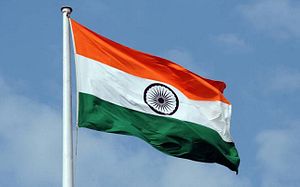With the term “Indo-Pacific” gaining increasing currency worldwide in both scholarly and official circles, New Delhi’s foreign policy moves are being watched with interest across the world, especially in Asia. At the same time, countries across the world and especially in Asia are adjusting to the rise of China. The ten members of the Association of Southeast Asian Nations (ASEAN) are no different. Many of them have huge trade volumes with China while some of them are embroiled in territorial disputes with Beijing. No wonder then that they are looking at increasing their foreign policy options. The rise of India has given many ASEAN states a compelling option.
New Delhi has long had historical ties with ASEAN member countries, though it botched those ties during the Cold War days. However, ever since the opening up of the Indian economy in the early 1990s and the launch of what was then called the “Look East Policy”, things have been looking up for India-ASEAN ties. After the Modi government came to power in 2014, the “Look East Policy” was re-christened as the “Act East Policy.”
The upcoming visit of the ten ASEAN heads of state and government to India for New Delhi’s Republic Day celebrations on January 26 is going to be a landmark event for India’s Act East Policy.
So, why is this occasion important?
First, India and ASEAN celebrated 25 years of their diplomatic partnership last year. Since 1992, much water has flowed down the Ganges. Now there are 30 dialogue mechanisms between India and ASEAN, including, as the Indian Ministry of External Affairs put it, “a Summit and 7 Ministerial meetings in Foreign Affairs, Commerce, Tourism, Agriculture, Environment, Renewable Energy and Telecommunications.”
Second, connectivity is the key issue these days for both India and ASEAN. India is constructing the India-Myanmar-Thailand (IMT) trilateral highway ,which will extend all the way from Moreh in northeastern India to Mae Sot in Thailand and is expected to be completed in 2020.
Third, India has not participated in Beijing’s Belt and Road Initiative (BRI). Although ASEAN nations are participating in the BRI, they would like to keep their options open with regards to connectivity initiatives emanating from India and some of them are also keen on investing in infrastructure projects within India. At the same time, it needs to be stressed here that ASEAN nations do not have any territorial disputes with India and New Delhi is largely seen as a benign power in the region.
Areas of Concern
However, things are not all rosy in the equation. There a quite a few loose ends that need to be tied.
First, trade levels have been much more lower than their potential. In 2016-2017, ASEAN-India trade stood at $71 billion, which was just 10.85 percent of India’s external trade.
Second, tourism is another area that has not lived up to its potential. Although the number of outbound tourists from India to ASEAN countries has increased, India only accounts for 3 percent of tourist arrivals to the ASEAN region. The number of tourists from ASEAN countries to India is nothing to brag about either.
Third, trade negotiations are at a delicate stage over the Regional Comprehensive Economic Partnership (RCEP). New Delhi has certain reservations with regards to RCEP while ASEAN nations would like India to sign on.
This visit of the ten ASEAN heads of state to India will give these nations and New Delhi an unique opportunity to hash out solutions to some of the issues that have been plaguing their ties. The time has come for New Delhi to take some bold initiatives so that it walks the talk when it comes to its ties with ASEAN nations. If New Delhi loses this chance, it may repent later on. At the same time, for ASEAN countries, this represents a chance to avoid putting all their eggs in one basket.
Rupakjyoti Borah is with the Institute of South Asian Studies at the National University of Singapore. The views expressed are personal. He tweets at @rupakj.

































